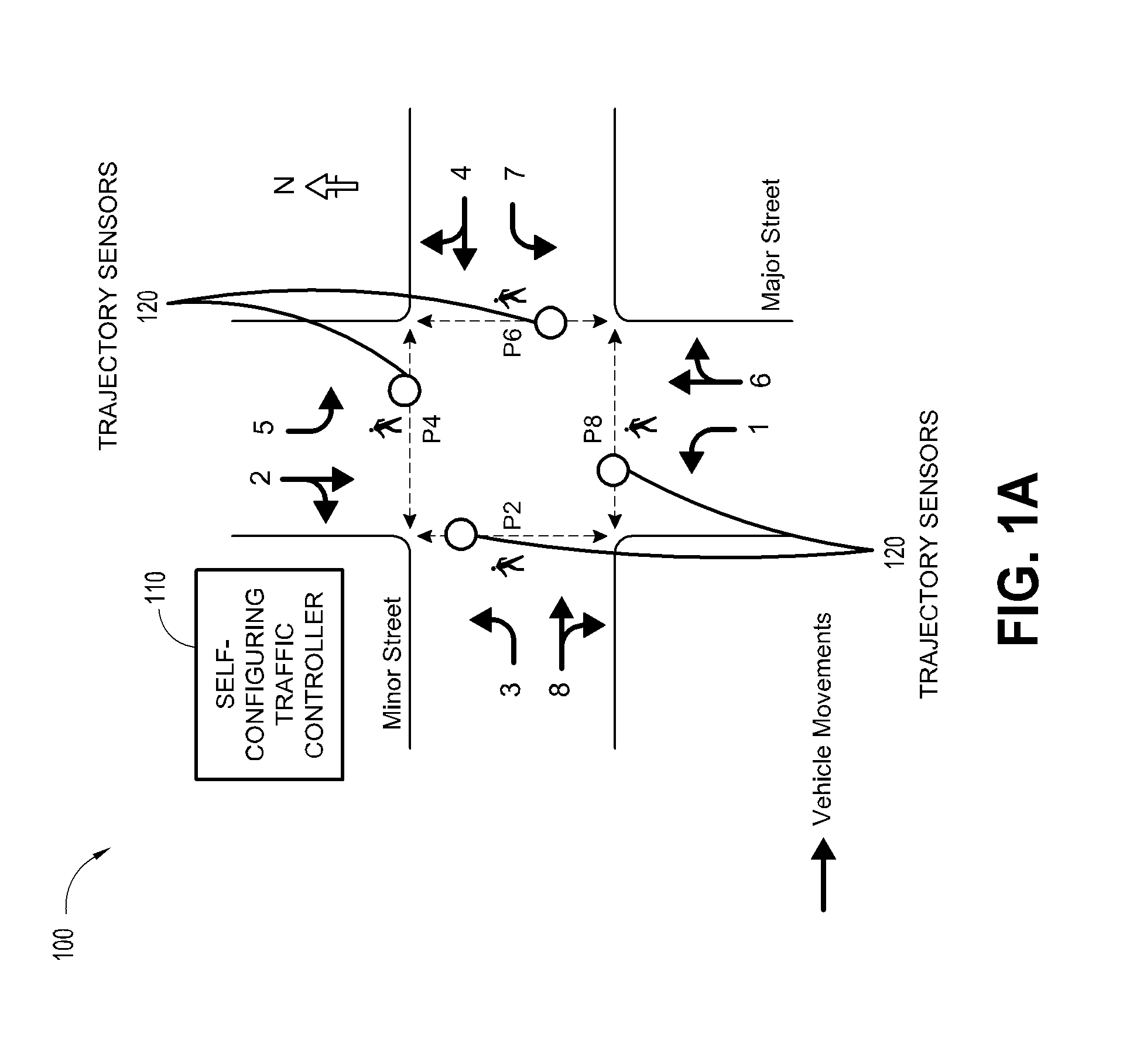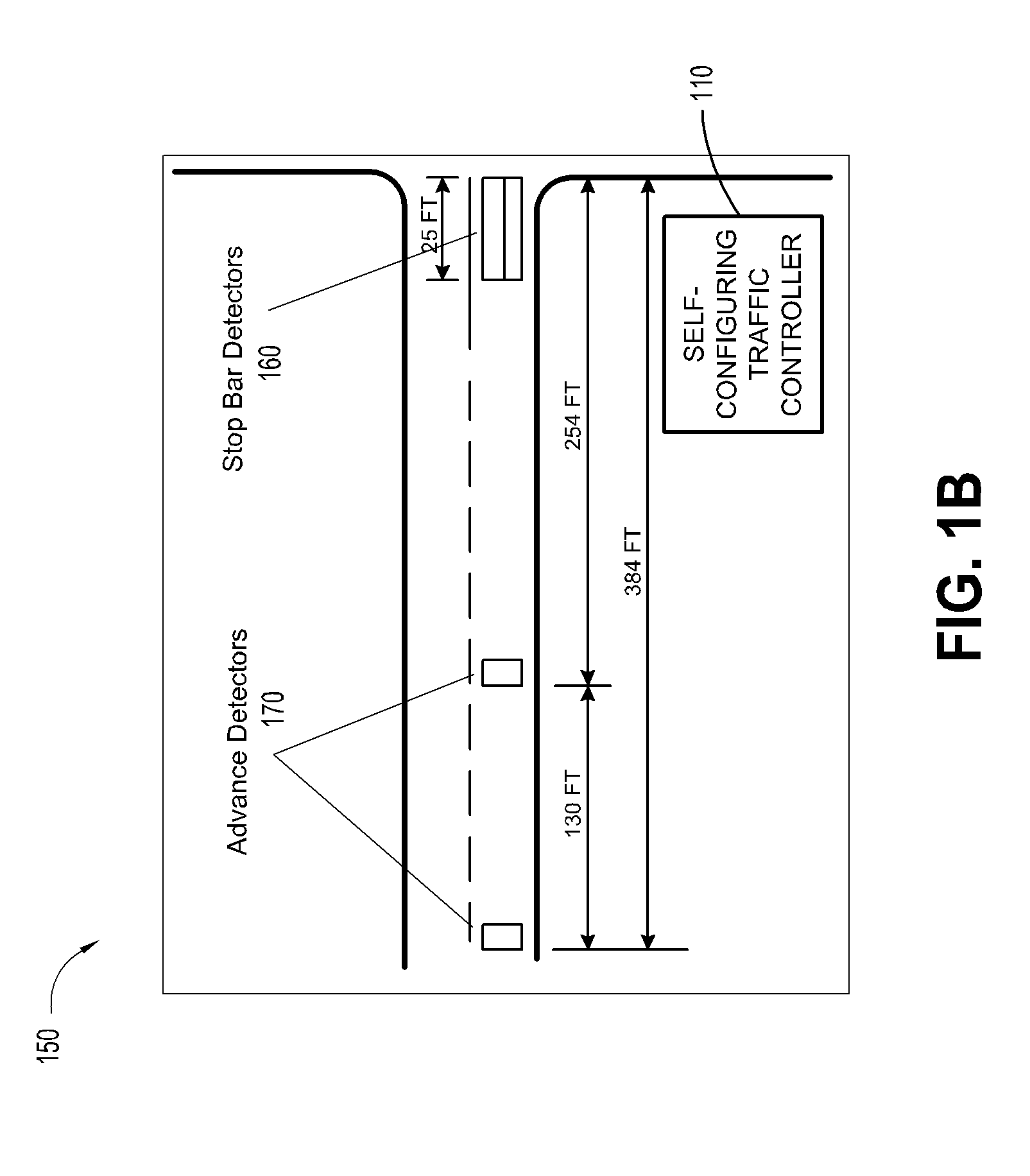Self-configuring traffic signal controller
a traffic signal and self-configuration technology, applied in the direction of road vehicle traffic control, traffic signal control, controlling traffic signals, etc., can solve the problems of signal retiming being a significant sustaining cost for most transportation agencies, and most agencies lack the resources to properly follow this process
- Summary
- Abstract
- Description
- Claims
- Application Information
AI Technical Summary
Benefits of technology
Problems solved by technology
Method used
Image
Examples
example
[0277]Phase Sequence 1, Assume: the traffic controller 210 just began serving phases 2&6 with an estimated time remaining of 40 seconds; the cycle length is 100 seconds; and the free flow speed for all approaches is 20 m / s.
TABLE 21ph2ph3ph4ph1ph240 secph6ph7ph8ph5ph640 sec
From this assumption, determine estimated split durations for the future phase movements.
[0278]Solution: The traffic controller 210 begins by demand modeling the next phases in sequence (3&7) determining the maximum number of vehicles in a lane within (40 seconds*20 m / sec=800 m) of the approach for each of these phases. The traffic controller 210 can take this number of vehicles*2 seconds / vehicle to determine the phase time needed to serve these vehicles. The model can then iteratively look for additional vehicles that will have arrived at phases 3&7 during the service of the previously counted vehicles for 3&7 and provide additional time for those vehicles. These phases 3&7 then can be terminated after service for...
example alternate
In example alternate units of vehicle-seconds and centigrams, the weights may be:
[0323]wd=1.00 (delay)vehicle-seconds
[0324]ws=0.10 (stops)vehicle-stops
[0325]we=0.50 (emissions)centigrams-CO
[0326]ws=1.00 (safety)vehicle conflicts
[0327]wc=1.00 (capacity)vehicles
4.3.2 Objective Sets
[0328]The traffic controller 210 can allow users to establish sets of these objective functions, identify them via alphabetical characters, and apply them to groupings of traffic signals on a time-of-day basis. As examples of possible applications, The traffic controller 210 may allow objective plans to be established and scheduled as one or more of the following four example plans:
[0329]Emissions Reduction Plan: Increased focus (weight) upon emissions control to be applied at critical sections of town during most polluted times of day.
[0330]Late Night Optimization: Weighted focus upon safety and reduction of stops during late night operation.
[0331]Normal Delay Reduction: Weighted focus on reduction of ...
PUM
 Login to View More
Login to View More Abstract
Description
Claims
Application Information
 Login to View More
Login to View More - R&D
- Intellectual Property
- Life Sciences
- Materials
- Tech Scout
- Unparalleled Data Quality
- Higher Quality Content
- 60% Fewer Hallucinations
Browse by: Latest US Patents, China's latest patents, Technical Efficacy Thesaurus, Application Domain, Technology Topic, Popular Technical Reports.
© 2025 PatSnap. All rights reserved.Legal|Privacy policy|Modern Slavery Act Transparency Statement|Sitemap|About US| Contact US: help@patsnap.com



